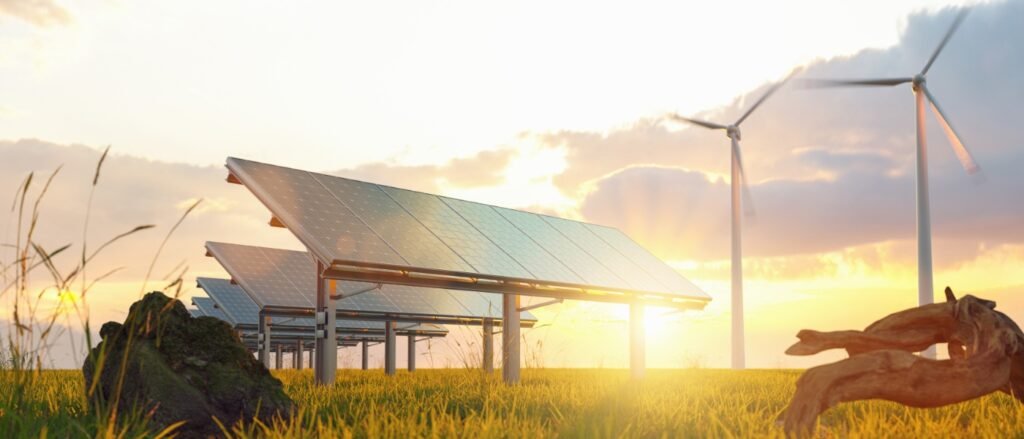
Vietnam’s green energy sector is experiencing a remarkable surge, positioning the country as a key player in the global transition to sustainable energy. The government’s ambitious goals, coupled with significant investments and favorable policies, have created a burgeoning market ripe with opportunities for international investors.
1. Government Commitments and Targets:
Vietnam has set aggressive targets to boost its green energy capacity. The Vietnam Ministry of Industry and Trade announced in early 2024 that the country aims to increase its renewable energy share to 30% of its total energy mix by 2030 (Ministry of Industry and Trade). This includes plans for 12 GW of solar power and 10 GW of wind power by 2030, reflecting a substantial commitment to green energy (World Bank).
2. Investment and Development:
The green energy sector has attracted significant foreign investment. For instance, Siemens Gamesa has secured a $1.6 billion deal to supply wind turbines for Vietnam’s offshore wind projects (Siemens Gamesa). Additionally, the Bac Lieu Offshore Wind Farm, one of Southeast Asia’s largest, is expected to generate 3.2 GW of power, highlighting Vietnam’s growing role in the renewable energy market
3. Favorable Policies and Incentives:
The Vietnamese government has introduced several incentives to attract green energy investments. The Vietnam Investment Review reports that these include tax breaks, feed-in tariffs, and import duty exemptions for renewable energy projects (Vietnam Investment Review). The recent revision of the Power Development Plan VII has also included provisions to support the development of renewable energy infrastructure and technologies (Ministry of Industry and Trade).
4. Infrastructure Development:
Significant infrastructure improvements are underway to support the green energy sector. The Vietnam National Power Transmission Corporation is investing in upgrading the national grid to better accommodate the influx of renewable energy (Vietnam Electricity). The development of new transmission lines and energy storage solutions will enhance the efficiency and reliability of Vietnam’s green energy distribution.
1. Solar and Wind Energy Projects:
Vietnam’s solar and wind energy sectors are rapidly expanding, driven by both government incentives and increasing demand for clean energy. As of mid-2024, Vietnam has installed approximately 20 GW of solar power capacity, making it one of the leading solar markets in Southeast Asia . Recent developments include the Phu Cuong Soc Trang Wind Farm, which is set to become one of the largest wind farms in the region, with a projected capacity of 2.4 GW (Phu Cuong Group). Additionally, Vietnam’s Binh Thuan Province is emerging as a major hub for wind energy, supported by favorable wind conditions and government policies. Companies specializing in advanced solar panel technology and wind turbine manufacturing are well-positioned to capitalize on this growing market.
2. Green Technology Innovations:
The demand for green technology innovations is escalating in Vietnam, reflecting a broader global trend towards smarter and more efficient energy solutions. Energy storage systems are particularly vital, as they help address the intermittency issues associated with renewable energy sources. The National Energy Efficiency Program in Vietnam aims to enhance energy storage and smart grid technologies, with the government investing in pilot projects and research (Vietnam Ministry of Industry and Trade). Moreover, the Vietnam Smart Grid Project, supported by international financial institutions, seeks to modernize the grid infrastructure and improve energy management (World Bank). Investors focusing on these cutting-edge technologies can leverage these initiatives to enter a rapidly growing market.
3. Public-Private Partnerships (PPPs):
Vietnam actively promotes public-private partnerships (PPPs) to expedite the development of green energy projects. The Vietnam Ministry of Planning and Investment reports that PPPs are instrumental in overcoming financing gaps and accelerating project implementation (Ministry of Planning and Investment). For example, the Vinh Tan 4 Thermal Power Plant has been developed through a PPP model, demonstrating the effectiveness of this approach in large-scale infrastructure projects (Vinh Tan Power). Such partnerships allow foreign investors to collaborate with local entities, share risks, and leverage local knowledge to successfully execute green energy projects.
4. Local Market Integration:
Integrating with the local market is crucial for navigating Vietnam’s complex regulatory landscape and achieving operational efficiency. Local partnerships provide insights into market dynamics, regulatory requirements, and consumer preferences. For instance, Samsung C&T Corporation has successfully collaborated with Vietnamese firms for its solar power projects, benefiting from local expertise and streamlined regulatory processes (Samsung C&T). Engaging with local stakeholders can facilitate smoother project execution and help foreign investors adapt to the local business environment, ensuring compliance with regulations and optimizing project outcomes.
Vietnam’s surge in green energy projects presents an attractive opportunity for international investors, driven by strong government support, significant infrastructure investments, and a favorable policy environment. The country’s commitment to expanding its renewable energy capacity and the growing demand for green technologies underscore the potential for profitable investments.
ASEAN Business Partners can play a crucial role in helping global investors navigate Vietnam’s green energy market. By offering strategic insights, facilitating regulatory compliance, and identifying key local partners, ABP ensures a smooth market entry and maximizes investment success in Vietnam’s green energy sector.
Stay up to update with our latest news.
Have Us Contact You

© Copyright ASEAN Business Partners 2025 I Sitemap I Privacy Policy